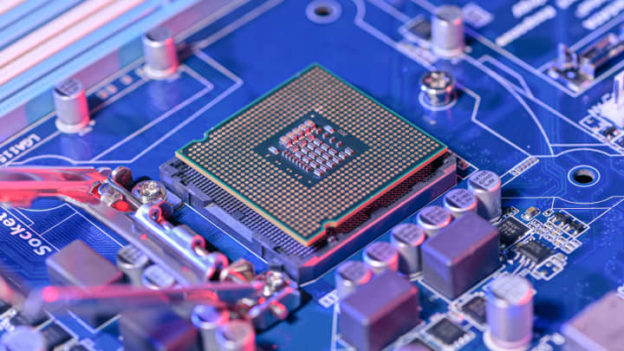The latest semiconductor chip crunch has sent ripples through entire sections of the economy that rely on them. From the automobile sector to electronics, the chip shortage has shaken up companies and countries. In the midst of this unprecedented crisis, India is in talks with Taiwan to set up an indigenous semiconductor assembly plant worth $7.5 billion, with the Indian government paying for at least half the amount, reported Bloomberg.
But while India is dreaming big of becoming a new semiconductor processing hub for the world, the likely outcome is going to be much more modest or disappointing. This is not the first time that the government has tried to woo semiconductor manufacturing companies to open shop in India either.
The shortage has only exacerbated and highlighted the key weakness in India’s position in the global electronic supply chain. Despite being one of the largest consumer markets of electronics and smartphones, India remains a net importer of both. Around 40 percent of India’s demand is met through imports from China, despite the frequent geopolitical impasse that the two nations find themselves in.
India’s failed bids
The government had previously floated an offer to foreign companies in 2017 to set up their facilities in India by waiving customs duty for the import of the relevant machinery and equipment. The sop evoked zero response.
In 2020, the central government floated another expression of interest (EoI), inviting companies that were interested in setting up semiconductor fabrication units. The EoI’s deadline was April 30, 2021 and had no apparent takers, with the government not announcing any bids from chipmakers. An earlier failed attempt to woo semiconductor giant Intel to India — which chose Vietnam instead — also stands as a stark reminder of India’s lack of real progress on the front.
Taiwan’s stranglehold and other competitors
India is not the only country that has dreams of becoming a semiconductor manufacturing hub. China has put in considerable resources and political will to turn itself into a major centre of chip manufacturing and processing. But China’s manufacturing prowess lacks the capability to manufacturer the latest and most efficient processors out there.
Taiwan, on the other hand, and in particular the Taiwan Semiconductor Manufacturing Company, holds a virtual monopoly in the global chip manufacturing industry. The company is responsible for over half of all semiconductor chips that are manufactured in the world, and the country as a whole is responsible for over 60 percent of global production. Other major centres include South Korea and the US.
A concerted effort
India now seeks to be on the same stage to feed its growing market, and be a hub to a critically important industry, especially as the world starts to pivot towards greener technologies that will all require semiconductor chips.
India is already home to the largest semiconductor designers, with offices of Intel, AMD, Nvidia, Samsung and others spread across the country. But the lack of experience, resources and technical knowhow are expected to be key issues.
But semiconductor production is a highly resource, knowledge and emission intensive process. Factories need a constant uninterrupted supply of power and vast quantities of water, besides the technical knowledge and a supporting ecosystem that involves that the rest of the processing between the chips being made and then being put to actual use in products.
The government is already scouting for locations to set up the planned area for plants with adequate land, water and manpower, while saying it would provide financial support of 50 percent of capital expenditure from 2023 as well as tax breaks and other incentives, people with knowledge of the matter told Bloomberg.
But whether the government is able to capitalise on the growing shortage — that is expected to continue even into 2023 — and establish itself as a potential hub for FAB units or once again fail to attract companies will be seen in years to come.
https://www.cnbctv18.com/technology/indias-big-dreams-of-semiconductor-manufacturing-and-the-challenges-that-lie-ahead-10991262.htm/amp





